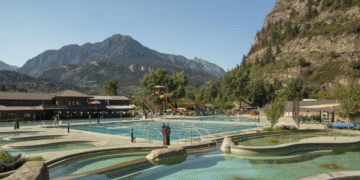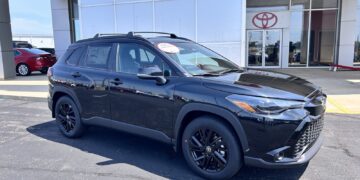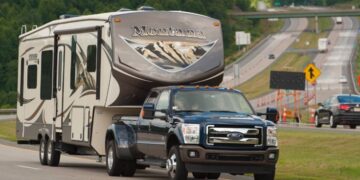Heading outdoors for a hike, a camping trip or a nature walk is exciting. But choosing the wrong shoes can quickly turn your adventure into an uncomfortable experience. Blisters, sore feet, and even injury can happen if your footwear doesn’t match the activity or the terrain.
In this guide, we’ll walk you through the steps to choosing the right footwear for your outdoor adventures. Whether you’re a beginner or a seasoned outdoor lover, this simple guide will help you find comfort, support, and durability every step of the way.
Know Your Adventure Type
The first step to finding the right shoes is understanding what kind of activity you’re planning. Different outdoor adventures need different kinds of support and protection.
Hiking
If you’re hiking, especially on rocky or hilly trails, you’ll want shoes or boots that support your ankles and have a tough sole for grip. These features protect your feet from twisting and slipping. A good hiking boot also helps when carrying a heavy backpack for long periods.
Walking or Light Trekking
For gentle walks or flat trails, lightweight shoes are fine. They should still be supportive and protect your feet, especially during longer strolls. Breathable materials help keep your feet dry and comfortable.
Camping
If you’re setting up a campsite and walking around the area, look for shoes that are easy to slip on and off but still give your feet protection from rough ground. Lightweight boots or rugged sandals can work well. Comfort and convenience are key when staying close to camp.
Climbing or Scrambling
This activity needs special shoes that grip well on rocks. Climbing shoes or approach shoes offer better traction and a snug fit for control. Choose a pair designed for both walking and climbing if you’re moving between terrains.
Understand the Terrain
The ground you’ll be walking on affects what shoes you should wear. Here’s what to look for based on different terrains:
Rocky Terrain
Look for thick soles with good grip to avoid slipping and protect your feet from sharp rocks. A reinforced toe box helps prevent injury from stubbing. These shoes are often built to last and give added ankle support.
Muddy Trails
Choose waterproof shoes with strong tread to keep from slipping and getting wet. Muddy areas can be tricky, so traction is very important. Also, pick a material that’s easy to clean after the hike.
Sandy or Desert Areas
Lightweight, breathable shoes are best to keep your feet cool. Make sure the shoes have tight-knit mesh to keep sand out. Some hikers also use gaiters for added protection from loose particles.
Wet or Snowy Conditions
Insulated and waterproof boots are a must in cold or wet areas. Look for shoes with deep lugs or even ice grips to help you walk safely. These shoes should also provide warmth and keep moisture away from your socks.
Key Features to Look For
Not all outdoor shoes are built the same. Depending on your adventure, these features can make a big difference:
Ankle Support
Higher boots help support your ankles on uneven ground. They’re ideal for rough trails, especially if you’re carrying extra weight. Ankle support reduces the chance of rolling or twisting your foot.
Waterproofing
Look for materials like Gore-Tex or eVent for waterproof yet breathable shoes. These materials keep your feet dry while allowing sweat to escape. Wet feet can lead to blisters and discomfort, so waterproofing is very helpful in damp conditions.
Breathability
If you’re in a dry, hot area, your shoes should let air in and moisture out. Breathable mesh panels or synthetic fabrics keep your feet from overheating. This helps prevent odor and irritation after long walks.
Traction
Look at the sole of the shoe to check the tread pattern. Deep lugs help grip muddy or loose terrain, while sticky rubber works well for rocks. Good traction helps you stay safe on slippery or uneven surfaces.
Weight
Heavy boots offer more protection and support, but they can slow you down. Lightweight shoes are easier to move in but might not support your ankles well. Think about the terrain, your pack weight, and how long you’ll be walking.
A good middle-ground option is the Altberg Wensley Shoe. It’s a lightweight yet tough shoe that works well for long walks, moderate hikes, and casual outdoor wear. It’s made with high-quality materials and fits well without being bulky.
Types of Outdoor Footwear
Here’s a quick breakdown of common types of outdoor footwear and when to use them:
Hiking Boots
Good for long hikes, rough trails, and carrying heavy loads. These boots offer excellent ankle support, strong soles, and weather resistance. They’re heavier but built for tough conditions.
Hiking Shoes
Great for shorter hikes or well-maintained trails. Hiking shoes are lighter and more flexible than boots, making them easier to wear. They offer decent grip and comfort but may not provide full ankle protection.
Trail Runners
Ideal for trail running or fast walking. These are very light and breathable, perfect for speed and agility. However, they may wear down faster and don’t offer as much protection on rocky trails.
Approach Shoes
Perfect for hiking to a climbing area or walking across rocky surfaces. They combine hiking comfort with rock-gripping soles. The fit is snug, and they often have a stiffer feel for more control.
Sandals
Useful for hot weather, water crossings, or campsite use. Outdoor sandals provide ventilation and are quick to dry. Choose a pair with rugged soles and toe protection for added safety.
Walk Smart During Outdoor Adventures
Choosing the right footwear for outdoor adventures doesn’t have to be hard. Whether you’re taking a weekend hike or spending days in the wild, your feet will thank you for choosing wisely.
Now that you know what to look for, it’s time to take the next step. Visit your local outdoor store, try on a few pairs, and choose the one that feels just right. Happy walking-and may every step of your journey be safe, comfortable, and full of adventure!
The fun doesn’t end here. Click over to the blog and discover more content that’s just as awesome!













